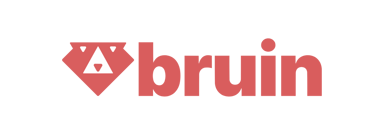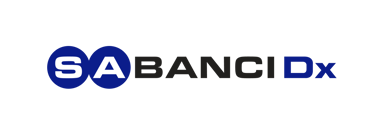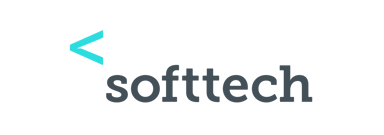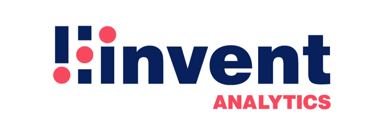Skill Gap
The skill gap is becoming increasingly significant for employee retention and development in today's competitive business world. That is because the gap between the skills employers seek and those employees possess will inevitably widen as technology and industries advance. To overcome the skills gap, organizations need to focus on this concept and work to reduce it.
What Is a Skill Gap?
A skill gap, or skills gap, is an HR concept that describes the disparity between an employee's skills and the organization's needs for a specific role. This mismatch makes it difficult for companies to fill unfilled positions.
Organizations that want to decide on how to arrange training programs to improve employee skill growth should concentrate on identifying skill gaps. In addition, skill gap identification can help employers find candidates with the relevant qualifications throughout the recruiting and hiring process.
Types of Skill Gaps
There are many types of skills gaps, but they can be divided into three main types as follows:
1. Knowledge Gap
Knowledge gap meaning refers to a shortage of job-related knowledge. This could include the specific information required to complete tasks successfully, the knowledge required to comprehend how the work fits into the larger organization, or the institutional knowledge unique to a given company.
Addressing knowledge gaps can help to increase employee performance and enhance collaboration among colleagues at the same time.
2. Skills Gap
While knowledge relates to an individual's acquisition of information and intellect, skills refer to the capacity to apply appropriate knowledge in a specific circumstance. Employees can learn through study, but skills must be performed. A job may involve mental (e.g., the ability to code), physical (e.g., fitness for a physical role), or soft skills like emotional intelligence (EQ) and communication.
3. Performance Gap
Performance gap definition refers to a lack of employee engagement or desire that results in low performance. In contrast to the previous two types, performance gaps at work happen when employees who have all of the necessary tools for success fail to meet expectations.
This could be due to a variety of factors such as inadequate performance management or personnel who do not fit in with the organization's culture.
What Causes a Skills Gap?
Numerous variables, including a changing workforce and a lack of training, lead to the skill gap problem. Here are the skills gap causes:
Lack of Competent Graduates
Schools and training programs may not always meet industrial requirements. That is why there is a shortage of trained professionals to fill high-demand positions in disciplines such as healthcare, engineering, and computer science.
Failure to Adapt to Technological Advances
Organizations need to adapt to the digital transformation as technology advances. Staff members must also refresh their digital skills to remain relevant.
Inadequate Training
Creating a successful workforce requires more than just employing more employees; it also involves equipping them with the necessary skills. Employers must fund appropriate training programs to support the growth of employees.
The Rising Demand For Soft Skills
Aside from technical skills, employees require soft skills including problem-solving, teamwork, and adaptability. These are particularly significant for remote employees and modern workplaces.
Changes in the Workforce and Economy
Finding and hiring qualified employees become more difficult as a result of changes in the job market, economic downturns, and aging workers. Some industries challenge to draw in young employees.
Incompatibility Between Education and the Job Market
Universities and training programs may not always provide the capabilities that businesses require. This gap makes it more difficult for graduates to find work and for employers to hire the proper people.
Unwillingness to Change
Some organizations are reluctant to change. For this reason, they generally do not invest in upskilling their staff members. Employees find it more difficult to stay competitive and acquire new skills as a result.
How to Identify Skill Gaps in the Workplace?
Identifying the skills gaps is important for every company. The following five steps will help organizations determine what skills their workforce lacks:
- Identify the organization's aims and objectives.
- Take into consideration the skills needed to accomplish those objectives.
- Determine which jobs are directly in charge of accomplishing each aim (for instance, sales representatives require greater customer service expertise than the IT department).
- Find out what skills your staff members already have.
- Examine how the skill sets the employees now possess align with the skills required to meet the aims and objectives of the organization.
What Is a Skill Gap Analysis?
Employers can find skill gaps in their workforce with the help of skill gap analysis. This analysis compares an employee's present skill set with what they require.
Using this data, HR departments can identify skills lacking in particular areas and set up training to compensate for those deficiencies.
The teams will adapt to the constantly changing demands of today’s competitive business world with the support of routine skills gap analysis.
How to Overcome Skill Gap?
Companies can use several strategies to close the skills gap, which occurs when employee skills fall short of job requirements and impede business growth and productivity:
Make an Investment in Staff Training
To address the skills gap, it is essential to offer chances for continuous learning. To assist employees in acquiring the necessary skills, organizations can set up internal training programs, sign up for online courses, and provide certifications.
Periodic workshops and access to e-learning platforms also guarantee that personnel are up to date on industry trends and advancements in technology.
Hire for Potential, Not Only Experience
Instead of concentrating solely on prior experience, it is a good idea to hire for flexibility and learning potential to avoid skill gaps early.
Using skills-based evaluations, systematic interviews, and clear job descriptions ensures that new hires are ready for their responsibilities, avoiding the need for prolonged training after onboarding.
Promote Mentoring and Coaching
To bridge the skill gap, experienced employees can mentor their less experienced teammates.
Programs for mentoring encourage information exchange and practical experience, while coaching assists staff members in improving their skills at that moment. This promotes more rapid growth, increases self-assurance, and enhances teamwork.
Utilize Technology for Learning
Thanks to modern digital tools, learning is more interesting and accessible. Companies can tailor training sessions to each employee's needs by utilizing AI-powered learning platforms. Particularly for technical skills, VR and AR simulations offer realistic training, and gamified learning boosts motivation and engagement.
Offer Regular Feedback and Career Development Opportunities
Continuous feedback is essential for closing skill gaps before they affect employee performance. Organizations should establish continuous feedback methods, instead of depending exclusively on annual assessments.
Managers should also provide clear career paths, constructive feedback, and challenging assignments to assist employees acquire the skills needed for future responsibilities.
Conclusion
In this content, you learned skill gap meaning, three common types of it, and other important details all the organizations need to know. As an employer, HR professional, or only someone interested in HR topics, you can use this content to advance your career and close skills gaps in your company.
Even though understanding and addressing the skill gaps are important, there are many HR subjects to learn on your career journey. You can visit Hirex now to improve yourself in the field of human resources and the business world!
Contents
Get a demo
- Quickly find top candidates with smart application management
- Improve team collaboration using built-in communication and workflows
- Offer a smooth candidate experience to strengthen your employer brand
- Count on 24/7 support for a hassle-free hiring process
- Quickly find top candidates with smart application management
- Improve team collaboration using built-in communication and workflows
- Offer a smooth candidate experience to strengthen your employer brand
- Count on 24/7 support for a hassle-free hiring process
"We truly felt the speed difference. Everything was smoother, and candidate feedback was much more positive. It made our jobs easier."

Trusted by 100+ teams
Get Informed,F.A.Q.
Revolutionize your hiring process with our transformative Applicant Tracking System (ATS.)
Suggested keywords
What is Cultural Fit?
Let's talk numbers - 89% of employers put cultural fit at the top of their hiring checklist. Pretty huge. But wait a second... what exactly does cultural fit mean in today's fast-moving workplace?The ...
Employee NPS Benchmarks
An Employee NPS benchmark is basically a way to see how your company’s employee satisfaction stacks up against others. It helps turn your eNPS score into something useful by giving it context. 📌You'r...
Salary Benchmarking
Salary benchmarking is basically figuring out if what you're paying your team makes sense compared to what others are offering for similar roles. It’s like checking the going rate before you buy somet...















